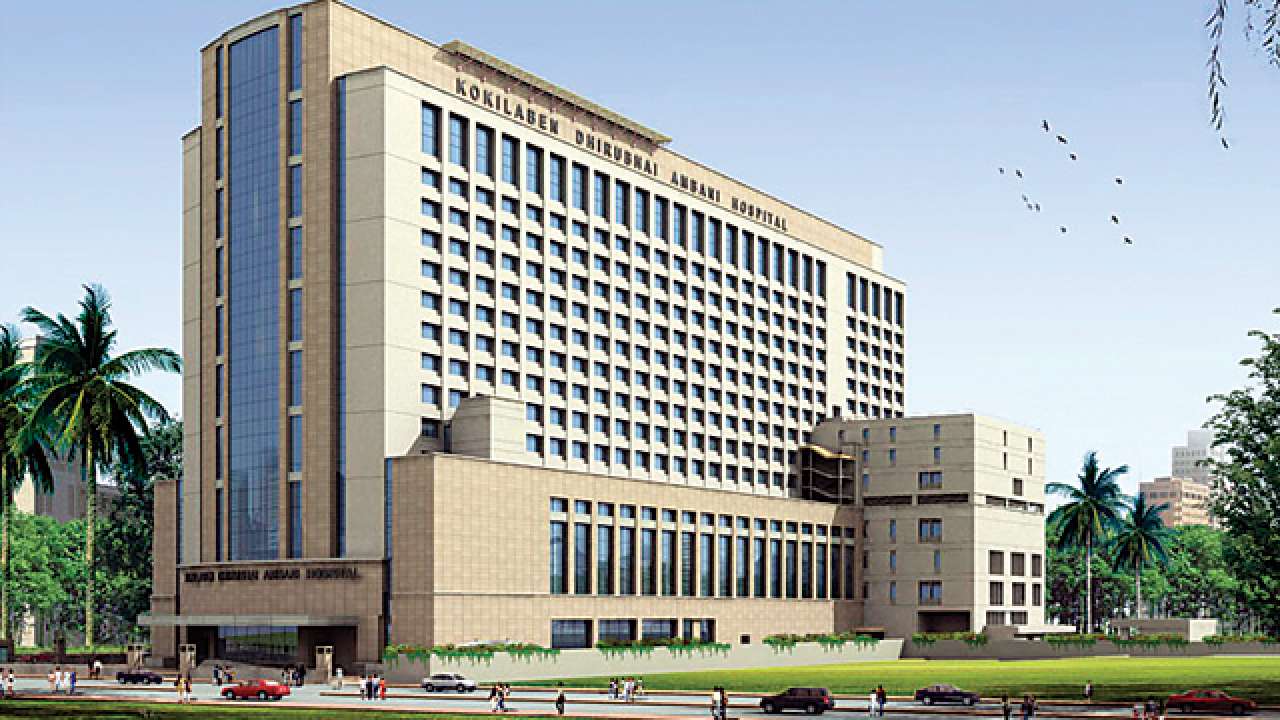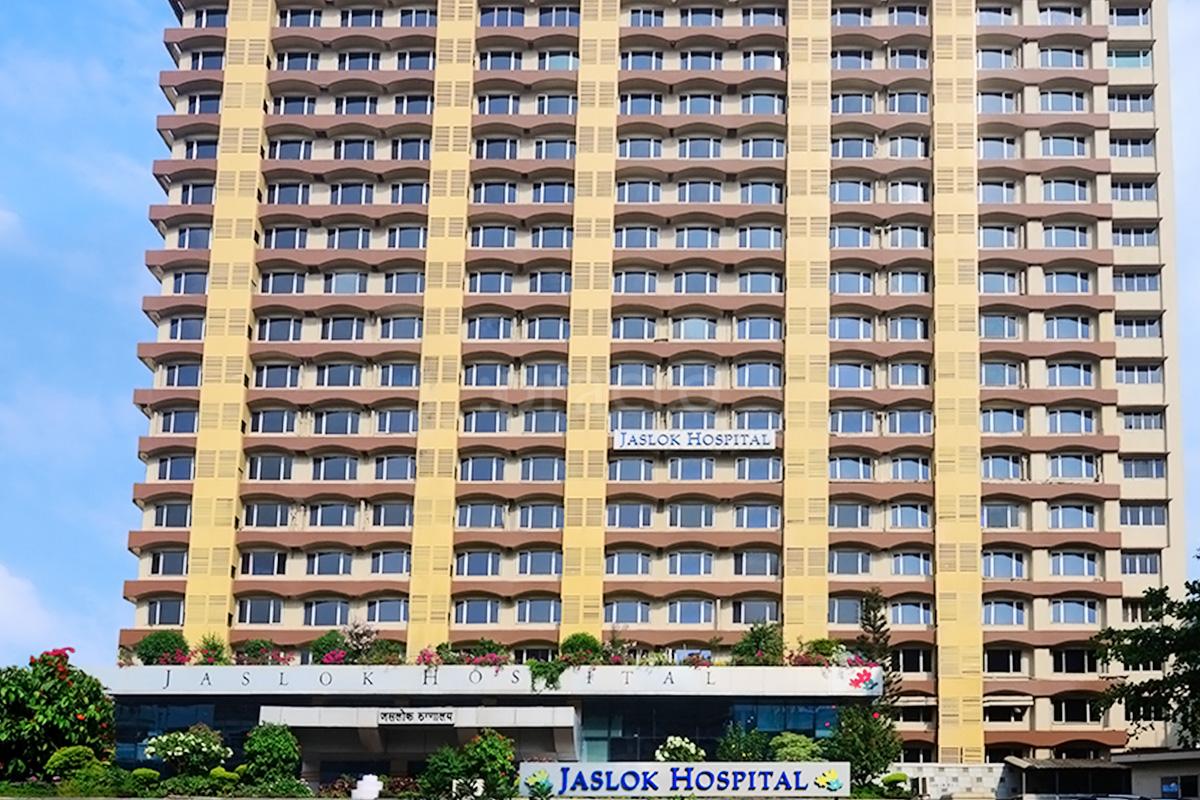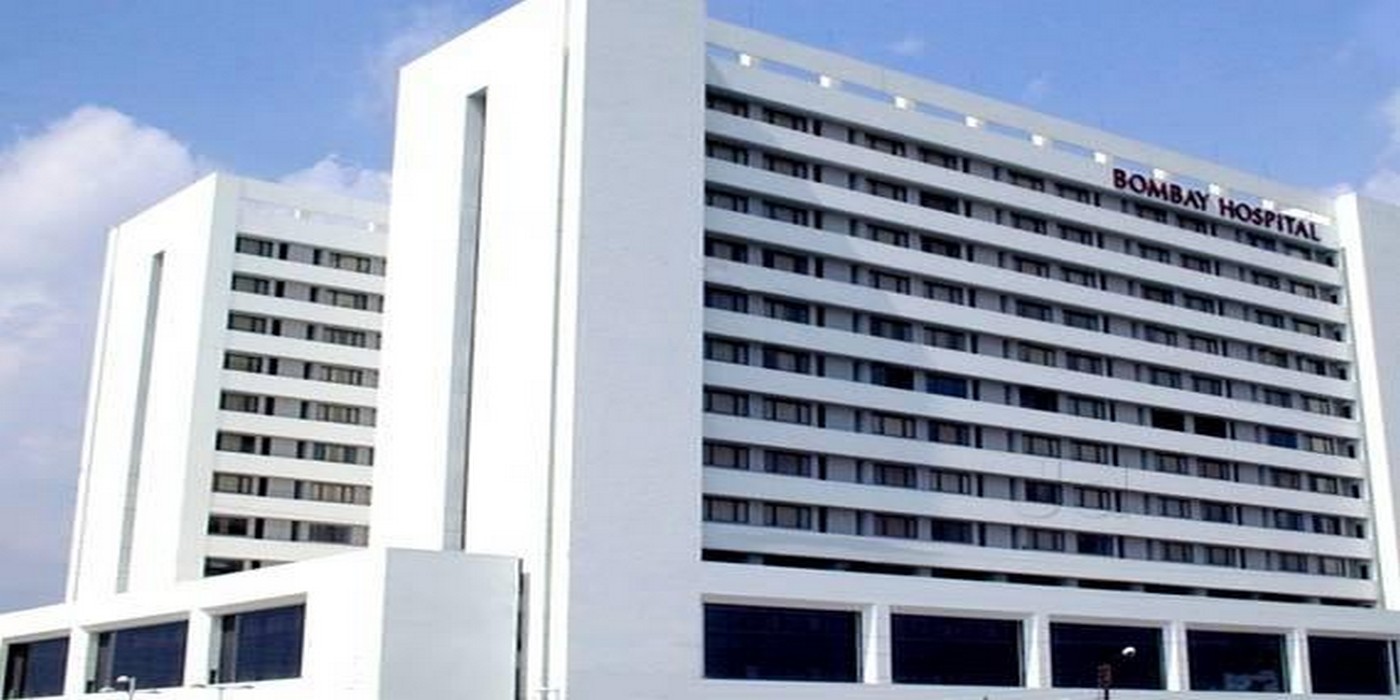Top 10 Best Hematology Hospitals in Mumbai in 2022

Hospitals are health care establishments that provide specialized health science, auxiliary healthcare personnel, and medical equipment for patient treatment. The most well-known type of hospital is the general hospital, which often features an emergency room to handle patients with urgent medical issues, such as fire and accident victims or acute illnesses.
A district hospital is often its region’s primary health care centre, with many intensive care beds and additional long-term care beds.
Specialized hospitals include trauma centres, rehabilitation hospitals, children’s hospitals, the elderly (geriatric hospitals), and hospitals for technical and medical requirements, such as mental care (see psychiatric hospital) and specific disease categories.
Compared to regular hospitals, specialized hospitals can cut health care expenses. Hospitals are classed as general, speciality, or government based on their revenue sources.
A teaching hospital combines patient care with health science education and ancillary healthcare students.
A clinic is typically used for a smaller health care facility than a hospital. Hospitals have numerous departments (such as surgery and urgent care) and specialized units (such as cardiology).
Some hospitals have outpatient sections, while others have facilities for chronic care. In addition, pharmacy, pathology, and radiography are specific support services.
Hospitals are often supported by public financing, for-profit or nonprofit health organizations, health insurance corporations, or philanthropic organizations, including direct charitable donations.
Historically, religious groups, philanthropic individuals, and leaders frequently founded and supported hospitals. Currently, hospitals are staffed chiefly by professional physicians, surgeons, nurses, and allied health practitioners, whereas \Methodists and Lutherans, continue to operate hospitals in the late 1990s.
Etymology
White H on a blue backdrop, representing hospitals in the United States. During times of peace, hospitals might be marked with various emblems. In the United States, a white “H” on a blue background is commonly used. However, in compliance with the Geneva Conventions, hospitals may display the red cross, red crescent, or red crystal during armed conflict.
Medieval hospitals were almshouses for the needy, pilgrim hostels, and hospital schools. The term “hospital” is derived from the Latin word hospes, a stranger or foreigner, and hence a visitor. Another noun derived from this is hospitium, which signifies hospitality, the relationship between visitor and shelterer, kindness, hospitality, and hospitable greeting. The Latin metonymy eventually evolved to mean a guest room, accommodation, or inn.
Hospes is the etymological origin of the English words host (where the p has been deleted for pronunciation), hospitality, hospice, hostel, and hotel. The latter contemporary word is derived from Latin by the Old French romance word hostel, which evolved into a silent s.
This letter was eventually dropped, as indicated by the circumflex in the present French word hôtel. The German word for the hospital has the exact origins. Only public hospitals in 19 of California’s counties and the only locally accessible hospitals in nine additional counties where one or more hospitals are located significantly from a community.
District hospitals comprise 28 rural hospitals and 20 critical-access hospitals in California. They are created by local governments, have boards chosen by their local communities, and serve local needs.
They are a particularly significant healthcare provider for uninsured patients and patients with Medi-Cal (California’s Medicaid program for low-income individuals, some older citizens, people with disabilities, foster children, and pregnant women). In 2012, district hospitals in California gave $54 million in uncompensated care.
Specialized
Starship Children’s Health is an Auckland, New Zealand children’s hospital.
A speciality hospital focuses primarily and entirely on one or a small number of medical specialities.
Rehabilitation hospitals, children’s hospitals, hospitals for the elderly (geriatric hospitals), long-term acute care facilities, and hospitals for specific medical needs such as psychiatric issues (see psychiatric hospital), specific disease categories such as cardiac, oncology, or orthopaedic problems, etc., are subtypes of general hospitals.
In Germany, specialized hospitals are known as Fachkrankenhaus; Fachkrankenhaus Coswig is an example (thoracic surgery). In India, specialist hospitals are referred to as super-speciality hospitals to differentiate them from multispecialty hospitals, which consist of multiple disciplines.
Unlike standard hospitals, specialized hospitals can assist in lower health care expenses. For instance, the Bangalore cardiac unit of Narayana Health specializes in heart surgery and can accommodate a substantially more significant number of patients. It has 3,000 beds and performs 3,000 paediatric cardiac procedures annually, more than any other clinic worldwide.
Since surgeons are paid a fixed salary rather than per operation, the hospital can take advantage of economies of scale and reduce costs per operation as the number of procedures increases.
Each specialist can become more productive by focusing on a single procedure, similar to a production line. Jackson Memorial Hospital in Miami’s Health District is the principal teaching hospital for the Leonard M. Miller School of Medicine at the University of Miami and the largest hospital in the United States, with 1,547 beds.
McMaster University Medical Centre in Hamilton, Ontario, is a teaching hospital.
A teaching hospital provides patients with medical care and training to future medical professionals, such as medical students and student nurses. It may be affiliated with a medical or nursing school and may do medical research. Additionally, students may watch clinical activities in hospitals.
Clinics typically solely provide outpatient treatments. However, some may have a few inpatient beds and a limited range of hospital-like services.
Departments or wards
After a trauma intervention, a bed in the resuscitation room demonstrates the highly technological nature of modern hospitals.
One or more wards of a hospital contain hospital beds for inpatients. In addition to acute services such as an emergency department, operating room, and intensive care unit, it may also feature a variety of medical speciality departments. For example, a well-equipped hospital may be classed as a trauma centre.
In addition, they may offer radiography, pathology, hospital pharmacy, and medical laboratories. Some hospitals provide outpatient treatments, including mental health services, dentistry, and rehabilitation.
A hospital may also have a nursing department led by a chief nursing officer or a director of nursing. This department is in charge of the administration of professional nursing practice, nursing research, and hospital policy.
Numerous units feature a nursing director and a medical director who function as administrators for their respective fields. A medical director, for instance, is responsible for physicians and medical treatment within an intensive care nursery, whereas the nursing manager is responsible for all nurses and nursing care.
Support units may comprise departments for medical records, information dissemination, technological support, clinical engineering, facilities management, plant operations, food services, and security.
Remote monitoring
The COVID-19 epidemic prompted the British National Health Service to construct virtual wards. Patients are cared for at home, monitoring their oxygen levels with an oxygen saturation probe if necessary and receiving phone support.
Between March and June of 2020, West Hertfordshire Hospitals NHS Trust managed over 1200 patients at home and is expected to maintain the system following COVID-19, initially for respiratory patients.
In April 2020, Mersey Care NHS Foundation Trust initiated the COVID Oximetry@Home service. This allows them to monitor more than 5,000 patients in their homes every day. The technology enables nurses, caregivers, and patients to monitor and record vital signs such as blood oxygen levels.
History
A view of the Asklepion of Kos, the best-preserved Asklepieion in existence.
Fa Xian, a Chinese Buddhist monk who traversed India in 400 CE, documented examples of healing facilities in ancient India.
According to the Mahavamsa, an early chronicle of Sinhalese royalty compiled in the sixth century AD, King Pandukabhaya of Sri Lanka (reigned 437–367 BC) had hospitals and lying-in homes (Sivikasotthi-Sala).
In addition to a hospital and medical training centre, Gundeshapur, an essential city in the southwest of the Sassanid Persian Empire built by Shapur I in 271 AD, was also home to a hospital. [19] In ancient Greece, temples devoted to the deity of healing, Asclepius, known as Asclepeion, served as medical counselling, diagnosis, and healing hubs.
Asclepias spread throughout the Roman Empire. While there was no public healthcare in the Roman Empire, there were military clinics known as valetudinarian stationed in military barracks that served the soldiers and slaves within the fort.
There is evidence that some civilian hospitals, which were unavailable to the Roman populace, were occasionally privately constructed in exceedingly affluent Roman residences in the countryside for that family, although this practice appears to have ended by 80 A.D.
An ancient hospital dating back two thousand years was uncovered in the Sri Lankan city of Anuradhapura Mihintale.
Middle Ages
Also, see Byzantine medicine, medieval medicine in Western Europe, and medieval Islamic world medicine.
The proclamation of Christianity as a recognized religion in the Roman Empire stimulated the spread of care services. Following the First Council of Nicaea in 325 A.D., hospitals were built in every cathedral city.
Among the oldest hospitals were those founded by Saint Sampson in Constantinople and Basil, bishop of Caesarea in modern-day Turkey. By the 12th century, Constantinople had two organized hospitals staffed by both male and female physicians. There were standardized treatment protocols and specialized wards for specific disorders.
The entrance to the Qalawun complex in Cairo, Egypt, where the renowned Mansuri hospital was located.
Harun Al-Rashid constructed the first general hospital in the Islamic world in 805 in Baghdad.
Baghdad had five more hospitals by the 10th century, Damascus had six hospitals by the 15th century, and Córdoba had 50 significant hospitals [when? ], many of which were specifically for the military. The Islamic bimaristan acted as a medical centre, nursing home, an institution for the insane. It treated the impoverished similarly to how the wealthy would have been treated in their own houses. Hospitals in this era were the first to demand medical degrees for doctors’ licenses, and malpractice was compensable.
Further citation(s) required] The law prohibited hospitals from rejecting patients who could not pay. These hospitals were funded financially by waqfs[30] and public monies.
Europe before the Enlightenment
In Europe, the medieval concept of Christian care transformed into a secular one during the sixteenth and seventeenth centuries. This was the first instance of material support being provided to medical institutions. 1820 engraving of London’s Guy’s Hospital, one of the first voluntary hospitals founded in 1724.
UNESCO recognizes the Hospital San Nicolás de Bari in Santo Domingo, Dominican Republic, as the oldest hospital constructed in the Americas.
Pennsylvania Hospital (now part of the University of Pennsylvania Health System). It was established in 1751, making it the oldest public hospital in the United States. It also contains the nation’s first surgical amphitheatre and medical library.
Hospitals were founded in London by the 1720s, notably Westminster Hospital (1719), pushed by the private bank C. Hoare & Co., and Guy’s Hospital (1724), funded by the gift of the wealthy businessman Thomas Guy.
Over the century, numerous hospitals sprouted up in London and other British cities, many supported by private subscriptions. For example, St Bartholomew’s in London was rebuilt between 1730 and 1759,[35] and the Whitechapel Hospital of the London Hospital opened in 1752.
These hospitals represented a turning point in the institution’s purpose, as they shifted from primary care centres for the sick to being hubs of medical innovation and discovery and the direct teaching grounds for aspiring practitioners. Some of the most outstanding surgeons and physicians worked and taught in the hospitals.
In addition, they evolved from simple shelters to complicated institutions for the supply of medicine and cared for the sick. King Frederick I of Prussia constructed the Charité in Berlin in 1710 in response to an epidemic of plague.
The notion of voluntary hospitals also expanded to Colonial America; the Bellevue Hospital started in 1736 (first as a workhouse and then as a hospital); the Pennsylvania Hospital opened in 1752, New York Hospital in 1771, and Massachusetts General Hospital opened in 1811.
When the Vienna General Hospital opened in 1784 (immediately becoming the largest hospital in the world), physicians obtained a new facility that evolved into one of the world’s most important research centres.
Another philanthropic innovation of the Enlightenment period was the dispensary, which provided free medications to the needy. The London Dispensary, the first clinic of its kind in the British Empire, opened its doors in 1696.
However, the concept was sluggish to gain on until the 1770s, when numerous organizations such as the Public Dispensary of Edinburgh (1776), the Metropolitan Dispensary and Charitable Fund (1779), and the Finsbury Dispensary began to develop (1780). Additionally, dispensaries opened in New York in 1771, Philadelphia in 1786, and Boston in 1796.
Let’s talk about the Top 10 Best Hematology Hospitals in Mumbai in 2022

- Kokilaben Dhirubhai Ambani Hospital, Mumbai
Established: 2006
Number of Beds: 750 Different Types,
About Kokilaben Dhirubhai Ambani Hospital, Mumbai
- The haematology unit has a specialized advanced haematological laboratory with a 5 part CBC counter, coagulation tests, HPLC, bone marrow routine with flow cytometry, molecular test, etc.
- The hospital also has advanced blood banking services, including platelet aphaeresis, leukodepletion, irradiation facilities, and everything else needed for bone marrow transplantation.
- Most haematological disorders, like leukaemia, lymphoma, myeloma, aplastic anaemia, thalassemia, sickle cell anaemia, and many others, are regularly treated.
- There are also excellent facilities, such as rooms with HEPA filters, an irradiation facility, a flow cytometer, molecular labs, etc.
- Haematologist Dr Sameer A. Tulpule has worked at the hospital for many years and has a lot of experience.
- His areas of expertise include stem cell transplantation, thalassemia, polycythemia, high and low platelet counts, high and low white cell bleeding, and clotting disorders.

2. Apollo Hospitals, Mumbai
Established: 1970
There are 500 different kinds of beds.
- Apollo Hospitals in Navi Mumbai is one of the advanced tertiary care hospitals offering a wide range of services under one roof.
- This is the 66th hospital run by the Apollo Group. The National Accreditation Board has approved it for Hospitals (NABH) and the Joint Commission International (JCI).
- The hospital also has personalized programs for health checks.
- It has cutting-edge technology and facilities that meet international standards.
- The hospital makes you feel at home, which helps you get better faster.

3. Jaslok Hospital, Mumbai
Established: 1970
There are 364 different kinds of beds.
About Jaslok Hospital, Mumbai
The hospital has a fully stocked department with a fully automated coagulation analyzer to do all coagulation and specialized tests.
- The unit has the most up-to-date 5-part Sysmex XT-1800i and XT-2000i differential counter, making it very easy to do a very accurate routine complete blood count.
- Dr V.P. Anita is a haematologist at the hospital. She has been working there for almost 25 years.
- He knows much about leukaemias, lymphomas, myelomas, complex haematological problems, etc.

4. New Wockhardt Hospital
Established: 2014.
There are 350 beds.
Multi-speciality,
About Mumbai’s New Age Wockhardt Hospital
- The hospital’s Hematology unit does all kinds of procedures daily, like treating anaemia, thalassemia, haemophilia, general blood clots, bleeding disorders, blood cancer, and so on.
- The department has a large team of highly skilled specialists, nurse clinicians, and physical and occupational therapists.
- The team uses the newest medicines and most advanced technologies to ensure the correct diagnosis and treatment are given.
- The hospital also offers blood gas treatment, sugar and oxygen analysis, emergency management, ascites and pleural tapping, state-of-the-art critical care facilities, early diagnosis, and preventive treatment.

5. Fortis Hospital, Mulund.
Established: In 2002
There are 300 different kinds of beds.
About the Mulund, Mumbai, Fortis Hospital
- One of the best haematology hospitals in India, with the most up-to-date equipment and a team of highly trained haematologists and bone marrow transplant doctors.
- Dr Ramaswamy NV is a haematologist who works at the hospital. He has been in the field for almost 18 years.
- Dr Ramaswamy is an expert at treating cancerous and noncancerous blood diseases in people of all ages. He is especially interested in hemato-oncology and stem cell transplants.

6. Nanavati Super Speciality Hospital, Mumbai
Established: 1950
There are 350 beds.
Very Specialized,
About Mumbai’s Nanavati Super Specialty Hospital
- The hospital is known for successfully treating haematological diseases like acute leukaemia, chronic leukaemia, multiple myeloma, myelodysplastic syndrome, and many more.
- It has various facilities and services, such as bone marrow, peripheral blood stem cells, and cord blood stem cell transplants for benign and cancerous diseases.
- The hospital is run by Dr Nimish Kulkarni, who has worked in the field for almost four years.
- Dr Kulkarni is an expert in bone marrow transplants and haematology for children.

7. Bombay Hospital and Medical Research Center, Mumbai
It was started in 1952
725 beds from different specialities,
About Mumbai’s Bombay Hospital and Medical Research Center
- Bombay Hospital is a tertiary care hospital with all specialities and super specialities under one roof. It does all kinds of diagnostic, therapeutic, and interventional procedures.
- Shri Rameshwardasji Birla started the hospital so that he could help people and anyone could go there.
- About 60 per cent of the surgeries that surgeons do are free or only cost a small amount.
- The main goal of the hospital trust is to promote medical education and help other private, nonprofit hospitals, especially those in rural areas.

8. Apollo Spectra Hospital, Mumbai
Established: 1970
There are 30 beds.
multi-speciality,
About Mumbai’s Apollo Spectra Hospital
- Apollo Spectra Hospital has 30 beds and offers medical care that is among the best in the world.
- The hospital offers care in various surgical specialities, such as ENT, Bariatric Surgery, Urology, Orthopedics and Spine, General and Laparoscopic Surgery, and Varicose Veins.
- The hospital is 15000 square feet and has state-of-the-art care to ensure patients get the best results.
9. Asian Heart Institute, Mumbai
In 2002, it was set up.
There are 250 different kinds of beds.
About Mumbai’s Asian Heart Institute
- Asian Heart Institute (AHI), which opened in 2002, is India’s number one heart hospital. It provides world-class heart care.
- More than 300,000 people have been treated at the hospital, and there have been 20,000 heart surgeries and 35,000 angiographies.
- The hospital was the first place to treat complicated heart surgeries. As a result, it has the highest success rate in the world, at 99.8 per cent for bypass surgeries and 99.4 per cent for cardiac surgeries.
- The Times of India Group’s Health Care Achievers Awards named the hospital India’s Best Private Cardiac Hospital. JCI, NIAHO, and ISO have approved the hospital.
- The WEEK-Hansa Research has been named India’s Best Private Cardiac Care for the past two years.
- India’s Best Cardiac Care Hospital by CNBC and ICICI Lombard healthcare award
- Medical Travel Quality Alliance has named it one of the top 10 best hospitals for medical tourists around the world (MTQUA)
- Indiatimes.com named it one of the TOP 5 Cardiac Hospitals in India.

10. Breach Candy Hospital, Mumbai
Established: In 1950
There are 173 beds.
Very Specialized,
About Mumbai’s Breach Candy Hospital
- Breach Candy Hospital has been around since 1950 and is known for its great doctors, nurses, and tests.
- It is one of the first hospitals to get a license for component therapy. In addition, it is accredited by NABH.
- There is a charity wing where people can get care for very little money.
- In 2018, the hospital did six kidney transplants. Five were between people who were related to each other, and one was between people who were not related.
- It is known all over the country as a leader in interventional cardiology.
There were famous people from Bollywood and Indian politics here.




